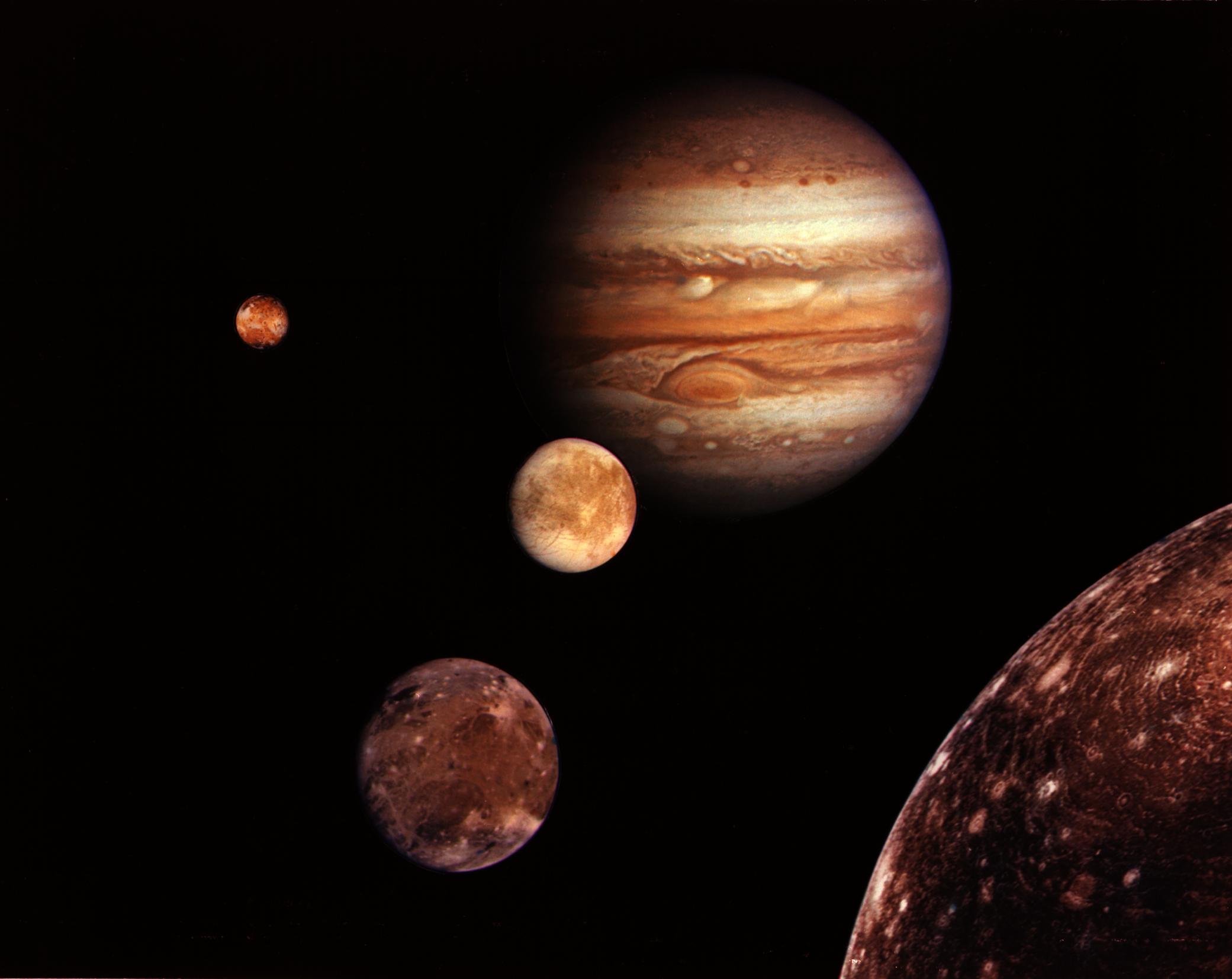Jupiter's Moons

Credit: NASA/JPL
The gas giant planet, Jupiter has more than 90 moons. So far, fewer than 60 of the moons have been named, the rest are waiting for official names.
Io, Europa, Ganymede, and Callisto are known as the Galilean moons in honour of the the astronomer who discovered them, Galileo Galilei. Galileo first observed these large moons in 1610. Most of Jupiter's smaller moons are recent discoveries - more than 70 of them have been found since 1999. Astronomers may find more moons around Jupiter in the future.
Io, Ganymede and Callisto are the largest of Jupiter's moons. These 4 moons are each bigger than the Earth's moon. They are so big, you can see them with a good pair of binoculars! They will only look like small spots of light, a bit like a star. But you know they are moons because they appear in a straight line that crosses Jupiter.
The other moons of Jupiter are much, much smaller than the Galilean moons. If you added the total mass of those dozens of small moons to make 1 moon, it would still be thousands of times smaller than Europa, the smallest Galilean moon.
Many spacecraft have visited Jupiter and its moons. The Pioneer missions took photos of the Galilean moons in 1973 and 1974. The Voyager spacecraft discovered volcanoes on Io and water ice on Europa in 1979. The Galileo spacecraft orbited Jupiter from 1995 to 2003 and discovered Ganymede's magnetic field.
| Facts and Figures | Io | Europa | Ganymede | Callisto | |
|---|---|---|---|---|---|
| a 1 Earth Mass = 5,980,000,000,000,000,000,000,000 kg | |||||
| Distance from Jupiter (km) | 421,600 | 670,900 | 1,070,000 | 1,883,000 | |
| Radius (km) | 1,815 | 1,569 | 2,631 | 2,400 | |
| Mass (Earth Masses) a | 0.015 | 0.008 | 0.025 | 0.018 | |
| Time of Orbit (Earth Days) | 1.77 | 3.55 | 7.15 | 16.69 | |
| Day Length (Earth Days) | 1.77 | 3.55 | 7.15 | 16.69 | |

